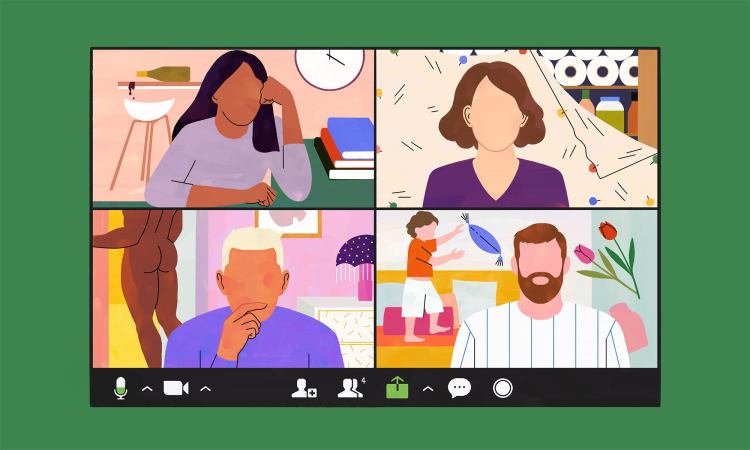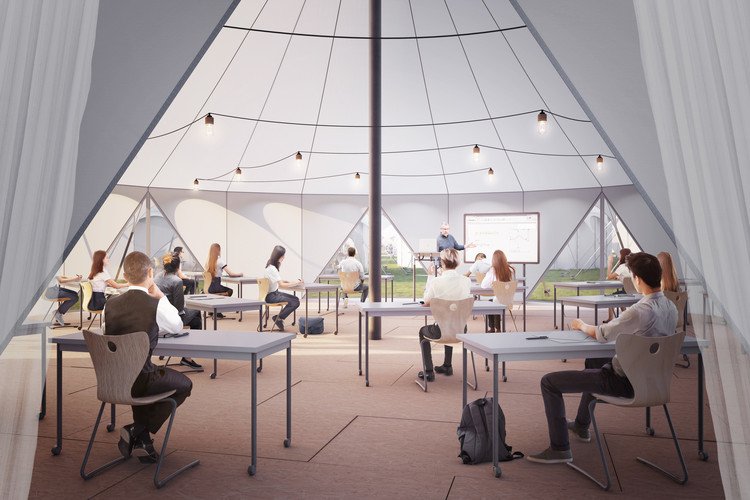As per the new normal, social distancing has now become the protocol globally. Many architecture schools and facilities have remained closed so far amidst the pandemic to ensure safety and have turned into educating students through online portals. Although many students, especially in the design field are having a hard time coping with the online system. One of the core reasons behind this the lack of an interactive set up as it forms a strong basis for the architecture coursework. It involves group projects and submissions. It includes many impromptu assignments also which makes the online set up for the course rather not feasible.
The major reasons being the approaches to remote learning haven’t been standardized as yet. Many international students who have returned home are now facing the issue of different time zones which is giving them a hard time to cope up with the semester. However, slowly the students and teachers have adapted to this new form of digital learning with Zoom and other video calling portals for lectures, critiquing of drawings and projects.

“Students are fretting that they can’t access the plotters, or robots, or their physical models,” said Winka Dubbeldam, Professor at the University of Pennsylvania Stuart Weitzman School of Design.
This system has also proven to be more time-consuming to convey a certain idea to the students and vice versa, teaching in such a setup is rather tricky. The isolation and uncertainty around the world are also creating a disconnect between the teachers and the students.
Although some of the institutes like the Pratt School of Architecture has offered a different set of view where they are in favour of online semesters. As per Harriet Harris the dean, online learning has favoured a moment to rethink the traditional practices of the architecture schools. It has challenged the way the schools have been functioning since history. Harriet also mentions how the cost implications of the design school have rather subsided due to the absence of printed drawings and physical models, which has indeed been a cost-saver for the students. He says that a new sustainable system has been anonymously developed due to the pandemic which favours the environment in a lot of ways.

In India as well many autonomous universities have been at the forefront in maintaining the normalcy of a regular semester through online teaching. However, due to a lack of resources and outreach, many students are facing issues regarding internet connectivity and technological support. Online studios have been a regular approach now but there is a string of disconnect within the peers which is making this type of learning less feasible.
So now the biggest question is, will universities be able to hold classes in person from the next academic year?
And, if yes, then how?
Many prime universities like Harvard, Syracuse, and others are still studying the possibilities of having an in-person semester for the next year. Some universities are also moving with the idea of having semesters run partly online and partly digital. Many schools have still kept this decision on hold as the pandemic is moving on an uncertain pace with no form of certainty. Although some institutes are in a belief that online or digital learning has its perks, many believe that an exchange of ideas through communal learning in a shared space is an ideal way of getting through design school.
So how can architecture schools function smoothly after the pandemic?
Partly In-person, Partly Digital – Design schools can have an alternate day visit structure for students where some subjects like architectural design that involve a studio atmosphere can be held in colleges with a stipulated amount of students. Other subjects that are mainly theory-based can have an online set-up with assignments submitted through mails.
Virtual over physical – Submissions can be presented through PowerPoint presentations rather than printed sheets to allow the no-touch way of learning. This will also act as a cost-saving method which is also eco-friendly.
Similarly, instead of having physical models, 3D drawings can be encouraged right from the start to ensure a safe environment for the students.

6 feet apart – While students being called in small batches, a strict protocol of being six feet apart at all times can be imposed. Drafting tables can be placed 6 feet apart to allow a safe drafting atmosphere for the students.

These methods are rather easy methods that can be exercised after a comfortable share of the reduction in cases and can ensure a balance between the ideal ways of teachings and an adaption to the ‘new’ normal.

